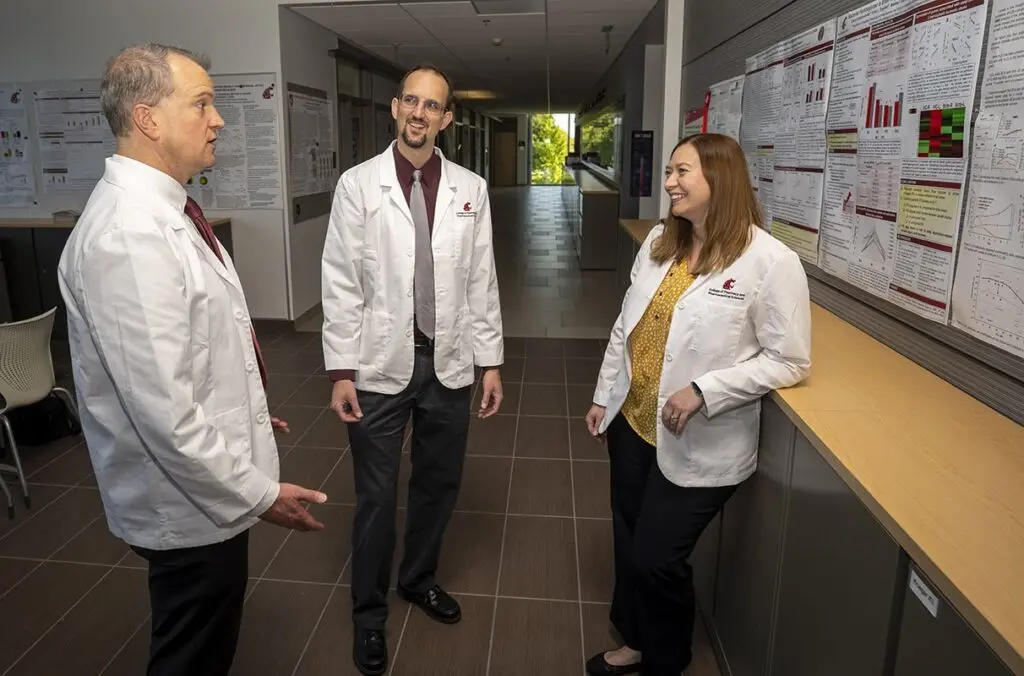SPOKANE, WA – An estimated 90% of patients receiving home health care have at least one discrepancy between their medication lists and what they’re actually taking — making it more likely they will end up in the hospital.
A Washington State University initiative helped a Spokane home health care agency ensure its patients’ medication lists were in proper order and reduced hospitalizations of high-risk heart-failure patients by more than half over a 10-week period.
The project aimed to help nurses and other in-home clinicians “think like a pharmacist” when reviewing medication lists for patients. It combined interdisciplinary teamwork, training in reconciling and evaluating medication lists, and a new tool for reconciling them — making sure that electronic records across different providers are consistent and updated, and checking that patients are taking the appropriate meds.
“When you go to the hospital, when you go to a nursing home, when you go to an urgent care or emergency room, you often have a clinical pharmacist involved in care,” said Jeffrey Clark, an associate professor in the College of Pharmacy and Pharmaceutical Sciences and the corresponding author of the paper reporting the findings. “Home health-care agencies don’t have that. They’re one of the few health-care entities that don’t have pharmacists involved in clinical care.”
The problem of “unreconciled” medication lists is pronounced among patients treated in their homes, and past studies have established that those with unreconciled medications are more than twice as likely to be hospitalized.
The quality improvement project was part of a nationwide Learning Action Network through the Institute of Healthcare Improvement focused on medication optimization. This project aimed to take existing knowledge and put it into practice, as a demonstration that others might follow. The results of the work were published in the journal Home Health Care Now. Professors Kimberly McKeirnan and Brian Gates, both with the College of Pharmacy and Pharmaceutical Sciences, co-authored the paper.
The problem of “unreconciled” medication lists is pronounced among patients treated in their homes, and past studies have established that those with unreconciled medications are more than twice as likely to be hospitalized.
Such patients may be on many different medications; some may have been prescribed by a general practitioner, and some by specialists. If patients have been hospitalized, they’ve come home with a medication list based in part on the information they themselves provided. They also might have had a temporary stop at a nursing home or rehab center before returning home.
All of this creates different sets of records, which may not align. On top of that, the way patients adhere to the lists varies widely.
“Home health-care clinicians are in the home and there is a unique opportunity to see everything a patient is taking,” Clark said. “This is a unique opportunity for nurses, physical therapists, occupational therapists, and sometimes pharmacists to evaluate what’s going on and make sure that reconciliation process is complete.”
The WSU project launched in late 2018, with the goal of reducing hospitalization rates among patients of Providence VNA Home Health, a nonprofit home health agency with around 3,500 patient admissions per year. (That agency has since become Providence at Home With Compassus).
Over the course of about a year a pharmacist-led interdisciplinary team developed trainings and a new tool — a detailed kind of checklist based on 13 different scenarios in which medication lists might be unreconciled. Clinicians were trained to use the reconciliation tools, as well as going a step further to evaluate the medications as a pharmacist would — for appropriateness, effectiveness, safety and adherence.
“Best practices suggest medication reconciliation cannot stop with matching up the medication list with what the patient is taking and updating the electronic record. We trained the clinicians to think a like a pharmacist by streamlining the reconciliation process and providing medication evaluation,” Clark said.
During a 10-week period after training was complete, hospitalizations of high-risk heart failure patients were cut from 23.4% to 11.4%. This result was particularly notable for patients with two or more unreconciled medications. At baseline, patients in this group were three times more likely to be hospitalized within 30 days. The project also saw a sustainable reduction in rehospitalizations (from 13.55% to 11.9%) among all patients over 17 months.
“This directly affects people in the Spokane area,” Clark said. “Thinking about our purpose at WSU, our land-grant mission, service to the public, and engagement with the community — I think the service to the healthcare needs of the community, by keeping people out of the hospital who don’t need to be there, is really important. When pharmacists are embedded in care teams and empowered to lead quality improvement, the results can be transformative.”
The project was supported by a grant from Pfizer.





